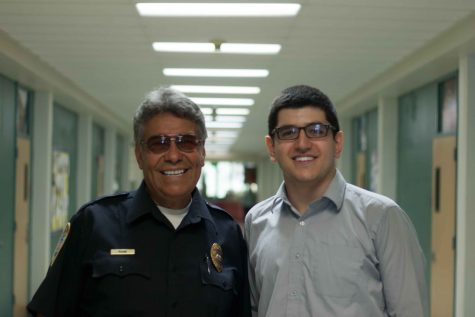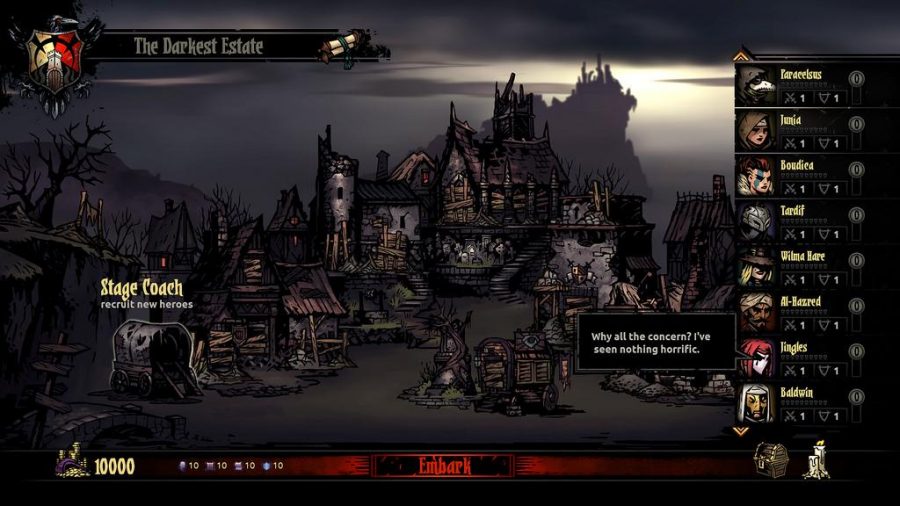‘Darkest Dungeon’ drowns gamers in blissful gloom
The new indie game is chock full of atmosphere, thrills and Lovecraftian horror.
photo via flickr.com under Creative Commons license
Pictured is the Hub world of the game. On it are the pub and church, used to cure heroes’ sanity, the asylum, used to cure heroes’ mental disabilities, the smith, used to upgrade weapons, and the stage coach, used to recruit new explorers.
Do you feel happy? Too happy? So happy that you want to feel more depressed and have all your hopes and dreams crushed under the unbearable weight of a meaningless campaign to cleanse an abysmal home of the darkest demons lurking in its hallways? Well then, this game is perfect for you.
“Darkest Dungeons” is an indie game designed by Tyler Sigman and developed by Red Hook Studios. It is a role-playing, dungeon crawl, turn-based, roguelike video game that has been in Steam’s Early Access service from Jan. 30, 2015, and got released as a full game on Jan. 19, 2016.
The game revolves around the player’s hypothetical uncle, who passes down his mansion to the player after his death. The catch is, the uncle has spent his entire life exploring the dark arts, summoning elder gods, practicing necromancy and doing many other vile taboo acts. Now it is up to the player to recruit a group of heroes/explorers to delve into the depth of this mansions, exploring its dungeons, sewers, fields, etc., cleansing the perversions of life that haunt the halls.
The gameplay is mainly focuses on turn-based combat. Now let me be first to say, I hate turn-based combat, which is a form of combat in video games where each participant of a fight take turns to hit the target, heal themselves, run away, or do whatever else, and then stand and allow the opponent to make his choice.
I hated this system for my entire life. Mainly prominent in Japanese role playing games (JRPGs), this type of combat always annoyed me as the idea of standing and letting the enemy beat at you baffled me always. But this game pulls it off so gorgeously that there is no way I can criticize it. Providing a vast group of heroes to use, the player must arrange them into groups of four, so that their attacks and defenses work off of each other, providing a seamless combo to defeat the enemy in one swift swoop.
However, this game is not easy. It’s two mechanics make it deathly hard. First, “Darkest Dungeons” has a permadeath systems. This means the characters the player uses die and stay dead, forcing the player to re-recruit new heroes, who start with the lowest skills and have to be leveled up all the way up, all over again.
Second is the sanity meter. The game focuses on battlefield PTSD, showing how witnessing armies of undead and the followers of Cthulhu drive the explorers insane. With every surprise attack, every wasted torch, every dead explorer the heroes lose sanity. Once the “sanity bar” is filled the hero is tested. If he or she succeeds, they gain an extra perk. More often than not they will fail leading to a crippling mental disability that ruins the whole game, causing heroes to disobey orders, steal items, and downright leave the party. Furthermore, if the bar fills up the second time, the hero will keel over from a heart attack.
Ultimately, if you enjoy gothic horrors, turn based RPGs, or Lovecraftian mythos, then this is the game for you. I enjoy all of these, especially the atmosphere that the game creates, and I would recommend it to anyone who wants to have some challenging fun in the middle of the night.

INTERESTS/HOBBIES: Gaming, Reading, movies.
EXTRACURRICULAR ACTIVITIES: KATS, Mock Trial.
THREE WORDS TO DESCRIBE ME ARE: I killed someone.
IN...













